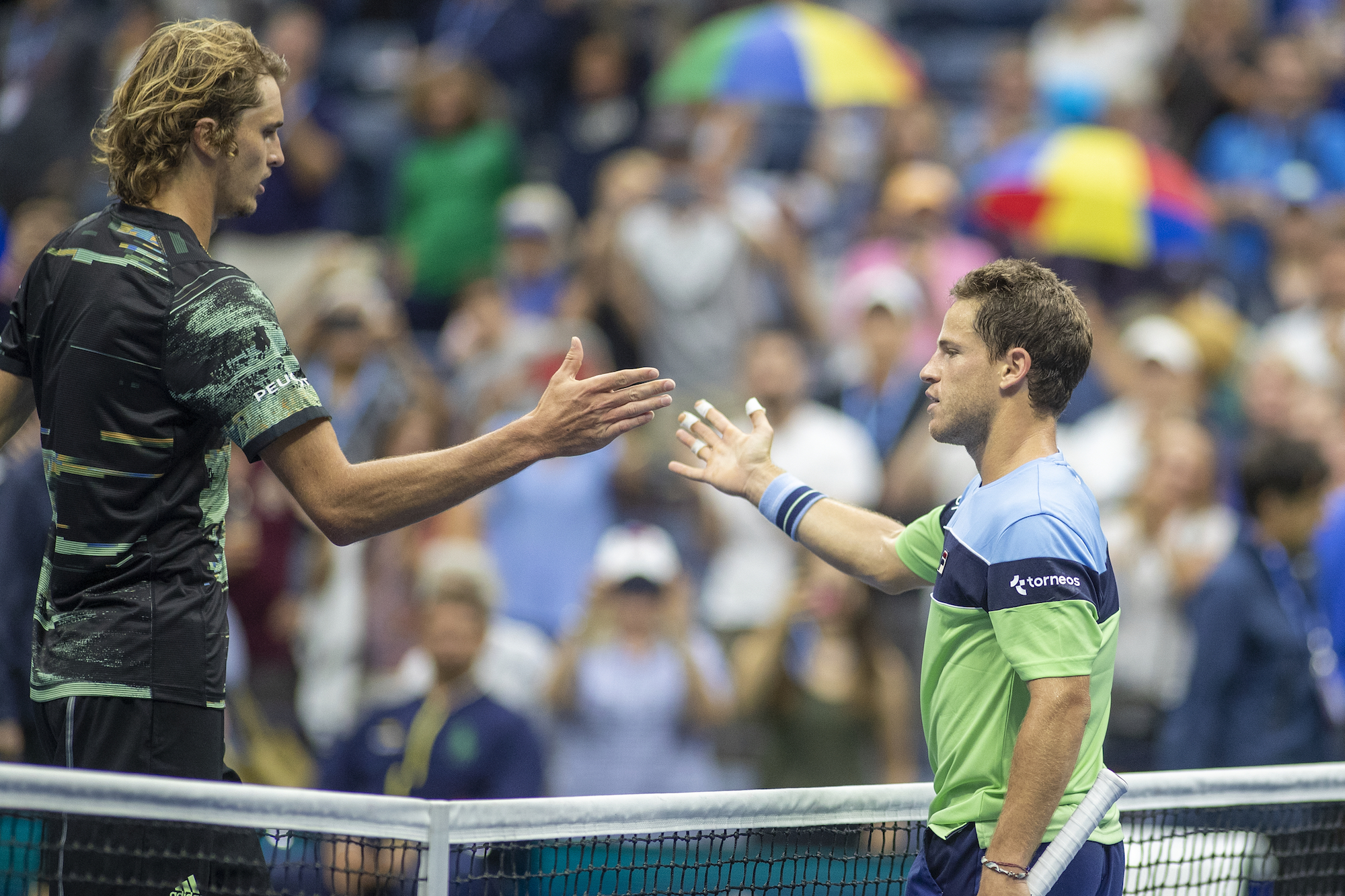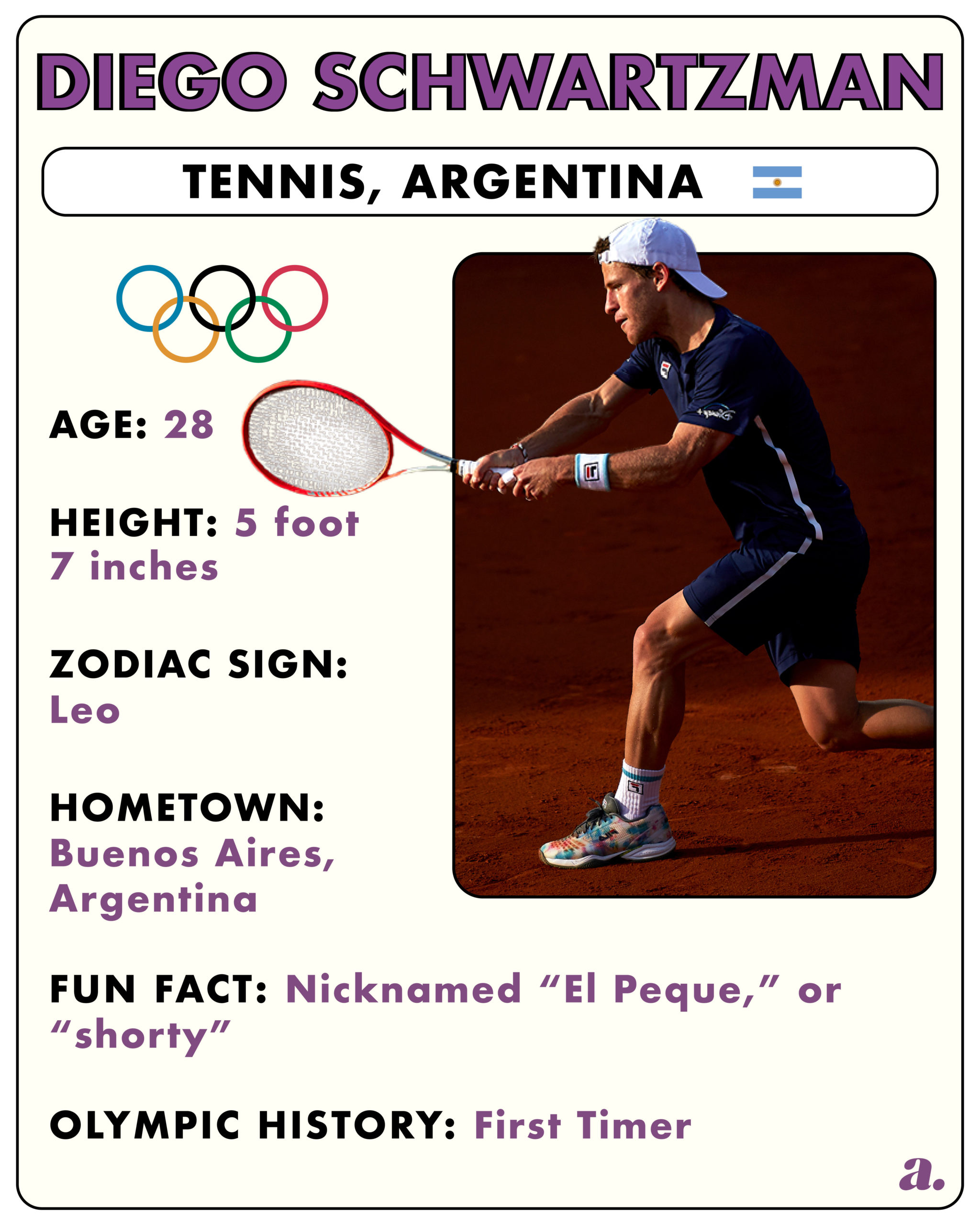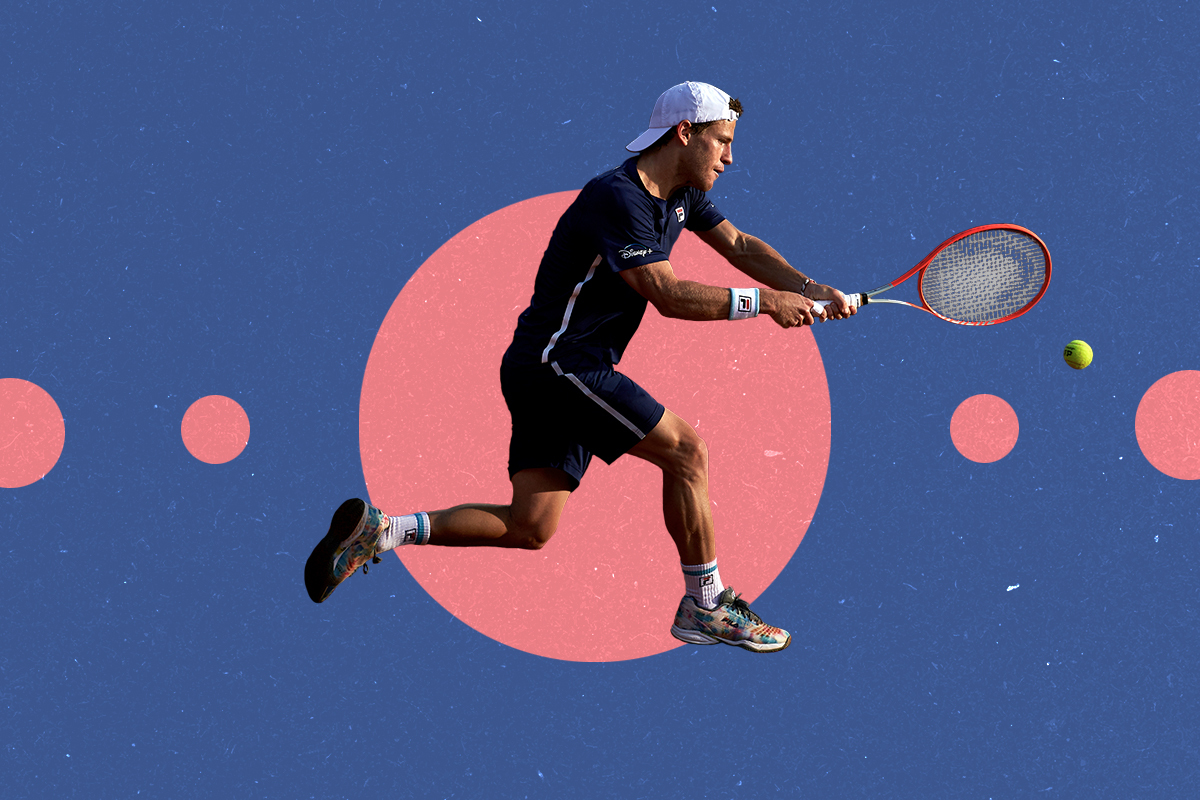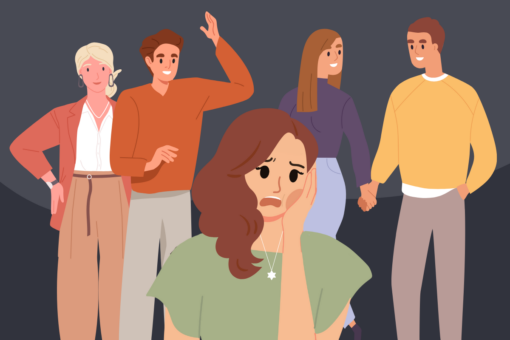Diego Schwartzman is currently the highest-ranked Jewish tennis player in the world. Born to a Jewish family in Argentina, he’s captured the hearts of tennis fans worldwide — including ours. So, time for 18 things to know about Diego Schwartzman? Obviously.

1.He was born and raised in a Jewish family in Buenos Aires. His family emigrated from Germany and Russia. Here’s the Schwartzman family when they were little:
2. He was named after the Argentinian soccer star Diego Maradona. (Maradona, famously, was 5’5″.)
3. He attended Hebrew school but said, “I did not have time for Hebrew school because of tennis.” He still had a bar mitzvah.
4. He started playing tennis at age 7. When, at age 13, a doctor told him he wouldn’t grow beyond 5’7″, he came home and told his parents, “I’m not going to play tennis anymore.” His mom, in classic Jewish mom fashion, refused to let him give up. “He told me he wasn’t going to do anything well in life if the doctor was right. I told Diego he was wrong and his height shouldn’t have an influence on his dreams because since the day he was born, I knew he would become something special. I pushed him to keep fighting,” she said.
Okay, one more quote from Silvana, Diego’s amazing mom:
“He had incredible timing, even at a young age. I’d play in the long corridors of the local tennis club and Diego would spend hours with my husband on the court. He wasn’t even as tall as the height of the net at the time. Still, he never wanted to play with a junior racquet; it always had to be a big racquet. He played soccer as a child as well, but the things he was capable of doing in tennis were out of the ordinary. And he had flair; he’d boast to us about beating players who were a lot taller than him.”
5. He often plays in a tie-dye kit, like this pink tie dye at the 2021 French Open:
Or rainbow tie-dye in 2020.
6. He played in the Hacoaj JCC club in Buenos Aires, a social club “founded by and for Jews who were barred from the other sports facilities in Bueno Aires in the early 20th century.”
7. “I am Jewish and in Argentina, we have many Jewish [people] there, and all the people there know me,” he said. His great-grandfather is a Holocaust survivor, who fled Poland after a train to a concentration camp broke:
“My great grandfather on my mom’s side, who lived in Poland, was put on a train to a concentration camp during the Holocaust. The coupling that connected two of the train’s cars somehow broke. Part of the train kept going, and the other stayed behind. That allowed everyone trapped inside, including my great grandfather, to run for their lives. Luckily, he made it without being caught. Just thinking about it makes me realize how lives can change in a heartbeat. My great grandfather brought his family by boat to Argentina. When they arrived, they spoke Yiddish and no Spanish. My father’s family was from Russia, and they also went to Argentina by boat. It wasn’t easy for all of them to totally change their lives after the war, but they did.”
8. He and his mom would sell bracelets in between matches to help fund their travels to tournaments where Diego would play. “At one point, we were even selling rubber bracelets that were left over from the business my family had. We did anything we could do to get money to pay for trips to tournaments and the travel costs,” he recalls. “Looking back, it was a tough situation. But at the time, it was funny. I helped my mom selling the bracelets, and so did some of the other players. Between matches we would all run around with a bag of bracelets to see who could sell the most, and my mom would give them 20 per cent of the money. It was like two competitions in one — tennis and selling bracelets!”
9. In 2018, his grandmother told JTA, “I suffered like crazy, but finally I’m happy for him, is a very good grandson, and despite his success he is still humble, he is still the same, he is still good people, a nice boy.” Awww. His whole family is super proud (“muy orgullo“) of Diego. His siblings often attend his matches, and post the sweetest messages on Instagram:
https://www.instagram.com/p/B18maSkFsBh/
10. He has two dogs, Bob and Ziggy:
11. His mom is also on Instagram, where she posts classic mom posts, like having him pose next to a picture of himself:
And low-quality throwback photos:
And screenshots of her son’s Instagram, pointing to his name on the bracket, videos of him playing on TV, and so much more. (Are we obsessed with Diego Schwartzman’s mom? Maybe.)
12. He’s nicknamed “El Peque,” or shorty, and takes it in stride. Although he’s not the biggest server, he is known for his “deadly returning.” During the French Open in 2018, after defeating 6’8″ Kevin Anderson, he said to reporters, “Did you read David and Goliath?” (A+ biblical reference, Diego!)
He often plays people much taller than him:
-

2019 US Open Tennis Tournament- Day Eight. Winner Diego Schwartzman of Argentina is congratulated by Alexander Zverev of Germany at the net. (Photo by Tim Clayton/Corbis via Getty Images)
And, as he writes on Instagram, size doesn’t matter:
13. “A lot of people ask me about my height,” Diego writes. “My answer is always the same: I have worse problems than being 10 centimetres shorter than everybody else. When I walk onto a tennis court, I don’t think about how tall I am or how much bigger my opponent is. I know there is a difference, but so what?”
14. He has won four career singles titles: Buenos Aires (2021), Los Cabos (2019), Rio de Janeiro (2018), and Istanbul (2016). As of summer 2021, he’s won nearly $10 million in prize money.
15. Diego is dating Argentinian model Eugenia De Martino:
16. His career-high ranking was number 8 in the world, in 2020. With the ranking, he became the shortest top 8 player since 5’6″ Jewish tennis player Harold Solomon in 1981. He also is the shortest Grand Slam semi-finalist since Solomon at 1980 Roland Garros, and ATP Masters 1000 finalist in series history.
17. In his 10th match-up against tennis great Rafael Nadal, Schwartzman won 6-2, 7-5 at the 2020 Italian Open. He’s faced Nadal in the French Open semi finals and the quarterfinals twice.
“I think at the beginning of every match against Rafa, you have to walk on the court thinking [about] winning the match, to have opportunities, to get opportunities,” Schwartzman said. “[It is important to] think about something else and not think about Rafa [being] on the other side of the net.”
18. Diego will represent Argentina in his first Olympics at the 2020 Tokyo Olympics (taking place summer 2021). Vamos, Diego!




